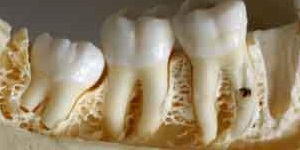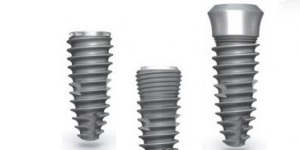
Maxillary bone grafting for insertion of endosseous implants
2015-09-27
جراحی در خلف مندیبل (فک پایین)
2015-09-28The oral rehabilitation with implants has high success rates because of the process of osseointegration. For its occurrence, the primary stability must be respected1-5, defined as lack of mobility in the surgical stage. Biological and mechanical factors, influenced by surgical technique, bone quality and quantity, and implant’s geometry3,6, are the key factors that define the primary stability and then, the success of osseointegration
Bone density is one of the most important parameters for the long-term success of dental implants. To observe the influence of this factor on primary stability in in vitro analysis, composed polyurethane substrates are frequently used3-6, which is used as synthetic bone substitutes of the human bone and is used in studies of implants. The human bones have high variability7 and characteristics that may influence the reliability and validity of measurements, such as fenestrations1, which makes necessary a very large sample to obtain a satisfactory significance in statistical comparisons. This is a hindrance to studies due to problems of availability, handling, preparation and preservation of natural bones
The knowledge of the bone density is essential for the dentist to come up with the best possible surgery plan, and selects the appropriate implant design to obtain primary stability. The development of new implant designs, surface treatments and a better understanding about bone biology have led to constant changings in implantodonty8. The large number of models available in the market or the absence of manufacturer’s clarification the effectiveness of the different models leave the surgeon with doubts and raise questions about design features. Implant design should be widely studied by researchers in order to increase the surface area in contact with the bone, consequently the osseointegration, bone anchorage and load distribution9-1º
Therefore, the stability is a primary requirement to determine the type of prosthetic treatment that will be started, which should be evaluated prior to application of force11. It is important the determination of a safe and practical method to detect the occurrence the primary stability. The numerical value of the initial stability can be provided for clinical instruments such as Periotest and Osstell, and can be translated as the insertion torque value measured during the final seating of the implant in the recipient bed, which provides information about the quality of local bone, it can easily be obtained with the aid of a surgical wrench
In addition to the clinical methods used for measuring primary stability, there are mechanical tests that analyze the resistance to movement of the implants and may be related to the physical and chemical properties of the screw. The pullout strength implant, widely studied in the Medical Orthopedics, is multifactorial and is related to bone mineral density, with the implant design and surgical technique, and it is proportional to thread surface in contact with the bone tissue, to avoid its releasing and classifies it as a property of stability of the screw12. Nowadays, there are a few available reports in the literature about the tensile strength of dental implants, which it could certainly contribute to the study of primary stability and its relation to the design of implants, where its proper selection is imperative to decrease the magnitude, quantity, and type of loads imposed on the implant / bone interface13






